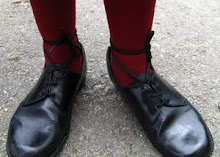Namaste (नमस्ते)!
Remember how I promised that I would go over Hindi greetings? Well today I’m going to take a break from the Hindi alphabet and teach you several Hindi greetings. Ideally this post should have probably been the first lesson on Hindi. Regardless of whether you can read or write Hindi, I think that knowing Hindi greetings will be useful in your day-to-day interactions with Hindi speaking people.
Let’s start with the basic and most common known Hindi greeting, Namaste (नमस्ते). This greeting is known even to non-Hindi speakers and you can frequently hear it being used in a typical American yoga class. That being said, the namaste (नमस्ते) in a yoga class differs slightly in meaning than perhaps a namaste (नमस्ते) in a conversational setting. I’ll get to that in more detail later. First, let’s cover the Namaste (नमस्ते) used to mean hello in Hindi.
As I’ve said in a previous post, namaste (नमस्ते) literally means, “I bow to you,” and is a way for Hindi speakers to greet each other. When Indian people greet each other with namaste (नमस्ते), the greeting is usually accompanied by a gesture that foreigners might find puzzling. The gesture involves two hands pressed together palm-by-palm in front one’s chest, with a slight nod of the head. The nod of the head and the pressed hands are carried out simultaneously with the greeting namaste (नमस्ते). The cool thing about this gesture is that you can just nod your head and press your hands together without the namaste (नमस्ते) greeting. It’s almost like sign language where you can convey a simple greeting without exchanging any words.
When you use namaste (नमस्ते) in a yoga setting, it means something quite different from “hello”. It’s hard to translate into English, but it can mean something like, “The light within me honors the light within you” or “That which is of the divine in me greets that which is of the divine in you”. It’s kind of amazing how one little word like namaste (नमस्ते) can imply a long wordy phrase in English.
Now if I want to say goodbye in Hindi, all I have to do is press my palms together without verbalizing the namaste (नमस्ते). Here’s how I will exit this post, namaste (नमस्ते) (wordless gesture).



























